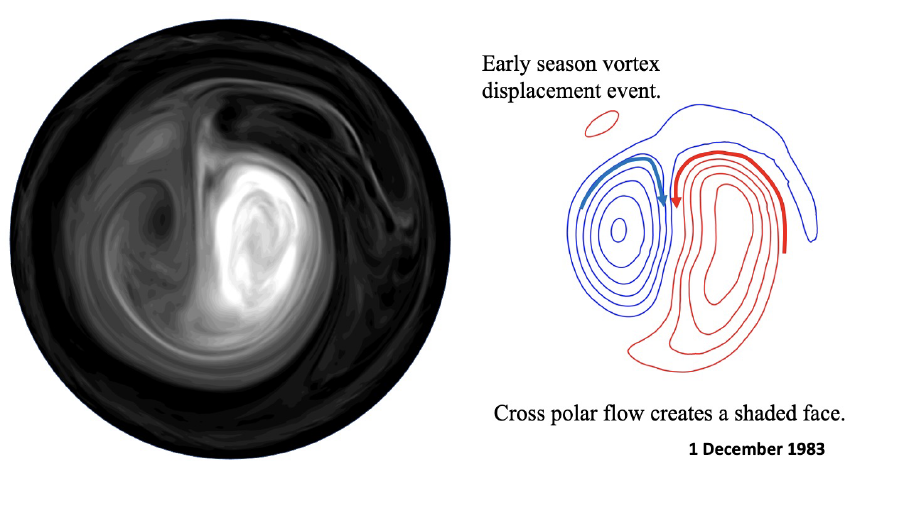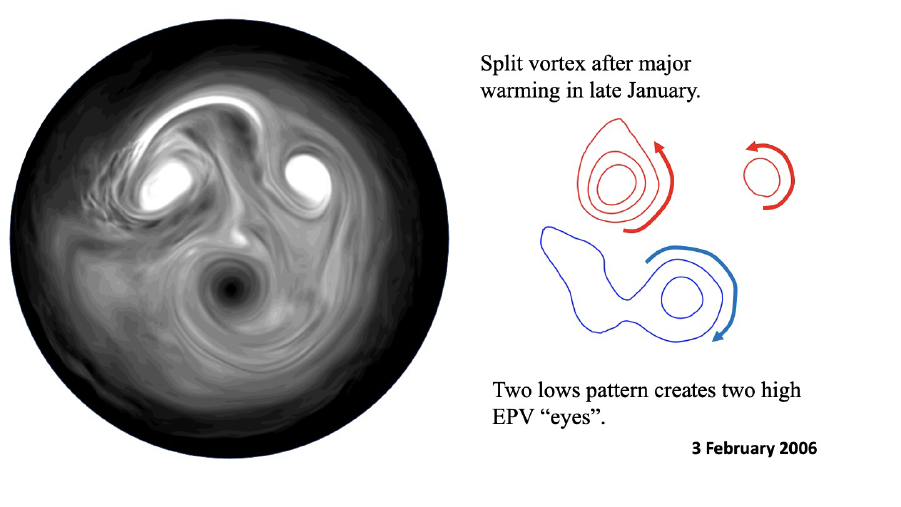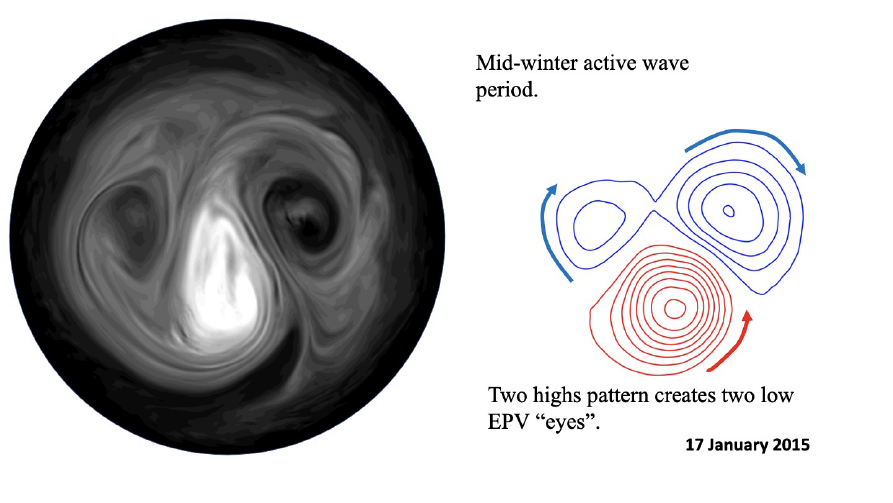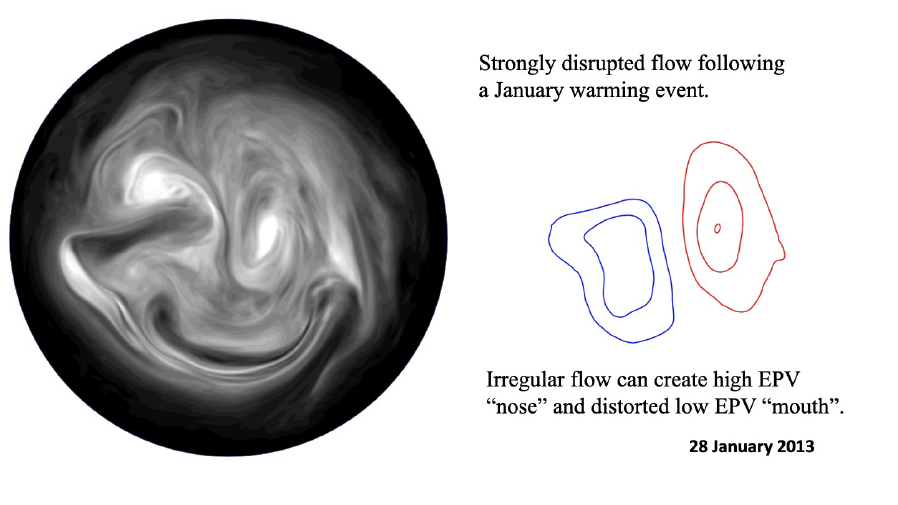The Many Faces of the Stratosphere
Seeing faces in common objects is a well-known experience. The stratospheric flow patterns, with their sometimes complex swirls and eddies on a global scale can often provide a background for the active imagination. Here, we present four examples of typical faces that we have encountered in the stratosphere while examining EPV (Ertel Potential Vorticity) fields from the MERRA-2 reanalysis system.
EPV is calculated from the wind and temperature fields. Potential temperature, based on temperature and pressure, is approximately independent of density and hence independent of vertical motion. This makes EPV, when plotted on a potential temperature surface, well conserved following the flow. In the figures below, Northern Hemisphere EPV is displayed on the 850K potential temperature surface, about 30 km in altitude in the middle of the stratosphere. High (white) EPV denotes counterclockwise circulation, while darker gray areas denote regions of clockwise circulations.
Face 1: December 1983: This happy character represents the most typical disturbed flow pattern in the stratosphere, where the stratospheric vortex (white, high EPV) is displaced off the pole by a low EPV (dark region). The broad "smile" is the lower part of the region accompanied by the long straight "nose" that is flanked by one bright and one dark "eye," suggestive of a half-shadowed face. Note the little "hair" of relatively high EPV frizzing off to the right. This displaced vortex did not result in a stratospheric warming event. However, a major stratospheric warming event did occur much later in late February of 1984.

Face 2: February 2006: This puzzled looking person results from a split vortex (two white regions) following a major stratospheric warming in January. A single low EPV region is approaching the pole creating a round "oh mouth" while the split vortex forms two bright "eyes." Another, stretched, high EPV region provides a quizzical "eyebrow." The vortex gradually reformed after the appearance of this visage.

Face 3: 17 January 2015: This gung-ho friend is centered on a bulbous "nose" of high EPV with two low EPV "eyes" swirling around it. A sort of half "mouth," smiling, appears below the "nose." This configuration of two dark "eyes" is less common than Faces 1 and 2. This winter was characterized by a relatively stable vortex without a major warming event.

Face 4: 28 January 2013: As with Face 2, this occurred following a major stratospheric warming in early January. However, this year the vortex breakdown was more complete, leaving only a few weak spots of high EPV. All sorts of faces can show in when this occurs. Here, we detect a very silly face with an ultra-wide, low EPV, "mouth." The most central white splotch can be taken as the right "eye" with the other white splotch the left "eye," though these "eyes" are very crooked. Is that strand of hair hanging down to the right? The vortex slowly recovered, spinning back up, after this event.



